Offer
1. Preshpan insulating material
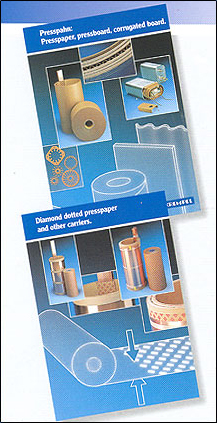 Preshpan is a reliable cellulose-based surface insulation material for Class A insulation materials.
Depending on the grade of cellulose, fibre pre-treatment and machine settings, different types of
precipitate with very specific properties are obtained.
Preshpan is a reliable cellulose-based surface insulation material for Class A insulation materials.
Depending on the grade of cellulose, fibre pre-treatment and machine settings, different types of
precipitate with very specific properties are obtained.
The characteristics and material properties of the precipitate are defined in DIN 7733 and IEC 641. In
addition to the high electrical puncture resistansce and high ease of impregnation with transformer oil
(mixed oil-cellulose dielectric), it is particularly worth emphasizing that the precipitate does not have a
specific flushing temperature. Therefore, it can withstand short-term thermal loads (e.g. a few seconds at
350°C) without any significant loss of its properties. Prespan can be pressed, crushed, punched and partly
formed.
Transformer preshpan in sheets of size:
od 0,10 mm -4,0 mm 1000x700 mm
od 0,10 mm -8,0 mm 2070x1000 mm
1,0 2,0 3,0 4,0 2200x4200 mm
in rolls from 0,10 - 1,0 mm 1000mm lub 2000 mm
Click and see the
table "Standard grades - Precipitate in rolls and sheets"
2. Multilayer insulating materials
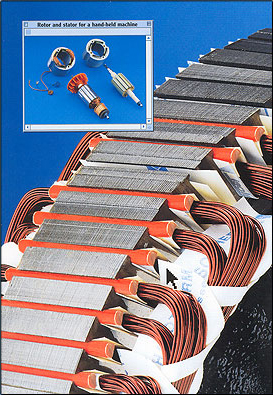 Flexible multilayer insulating materials are obtained by bonding plastic film with precipitate, fibres,
fabrics or plastic paper. These materials are most often produced in a three-layer version with the middle
layer being a plastic film. Depending on the choice of starting components, the resulting flexible
multilayer insulation materials are characterised by very specific properties such as operating temperature,
flexibility, tensile strength, elongation, puncture strength, impregnation ability and
stiffness.
Flexible multilayer insulating materials are obtained by bonding plastic film with precipitate, fibres,
fabrics or plastic paper. These materials are most often produced in a three-layer version with the middle
layer being a plastic film. Depending on the choice of starting components, the resulting flexible
multilayer insulation materials are characterised by very specific properties such as operating temperature,
flexibility, tensile strength, elongation, puncture strength, impregnation ability and
stiffness.
The combination of plastic films and fibrous materials brings both technical and economic benefits. By
bonding, the specific properties of the individual components can be ideally exploited. In this way, plastic
films provide excellent electrical and mechanical properties, while fibrous materials are easy to impregnate
and protect the film. This combination increases the tear and tear strength, improves the bending and
punching properties and protects the film from the harmful effects of oxidation and hydrolysis. Flexible
multilayer insulation materials allow cutting, bending, extrusion and, within certain limits, hot and cold
forming.
Click and see the
table "Standard grades of flexible multilayer insulating materials"
3. Special insulating papers
Special insulating papers used to insulate elements in transformers and other electrical power equipment
such as:
- crinkled paper
- crinkled paper tubes
- cable paper (transformer paper)
- creped semiconductive paper (black)
- Semi-conductive paper smooth (black)
- DPP paper - DDP resin-spotted
- paper tape reinforced with glass fibre thread
4. Prepreg insulating material
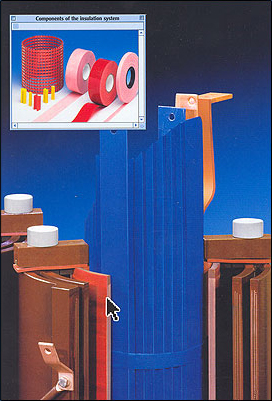 Prepregs are obtained by impregnating or coating preshpan, papers, fibres, fabrics, foils or multilayer
insulating materials with a variety of thermosetting insulating resins, which are characterised by the
reaction state B.
Prepregs are obtained by impregnating or coating preshpan, papers, fibres, fabrics, foils or multilayer
insulating materials with a variety of thermosetting insulating resins, which are characterised by the
reaction state B.
Prepregs are used in the manufacture of transformers and electrical machines for insulating and
strengthening winding elements. The advantage of these high-quality materials is that they are used as
impregnating
agents (uncured artificial resins) and are placed with the surface insulation in grooves or wound with the
foil on the windings. In the further curing process of the resin, the insulation is glued to the electrical
conductors. Prepregs can be further processed very easily.
Click and see the
table "Prepreg standard grades"
5. Plastic reinforcing plates and fittings.
Under the name "PREGNIT®" we produce fibre-reinforced plastic plates which are pressed according to customer
specifications. By deliberately selecting the type of fibres, resins and material structure to take into
account the future use of the panels for a wide variety of applications, opening up new construction
possibilities. Fibre-reinforced plastic plates can be machined with both hardened steel tools and diamond
tools without any problems. The most common processing methods are cutting, drilling, grinding and
turning.
Many constructional problems can only be solved if you have fittings with precisely defined dimensions and
properties. In industrial electrical equipment, spring grooves made of fibre-reinforced plastics are used
for locking the winding rods and for damping, while conductive lateral groove springs ensure contact between
the heat protection of the winding rods and the groove wall. Inlet springs are much easier to install in
grooves than fibreglass-reinforced plastic panels (GRP).
Below the structure of the electrically conductive lateral groove spring.
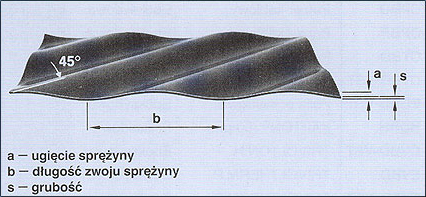
6. Electrically conductive surface materials.
Current-conducting nonwovens and fabrics are obtained by impregnating nonwovens and polyester fabric or
glass fibres with binding agents containing different concentrations of conductive particles. In this way,
any surface resistances from 100 to 20,000 Q/D can be achieved using the same carrier. The binders are
cured. For special applications, electrically conductive impregnated glass fabrics - Prepregs electrically
conductive fabric laminates are produced.
Electrically conductive surface materials are used in machines, transformers and high voltage cables to
provide general insulation, increase operational safety and extend the service life. Although they are
actually dealing with marginal problems in the field of high-voltage technology, they should be given a
great deal of attention. Depending on the scope of application - whether as insulating materials (non-woven,
conductive fabric) or as keyway filler materials (conductive GRP panels and GRP springs made of glass fibre
reinforced plastics), they must have a number of specific mechanical, thermal and electrical properties.
Click and see the
table "Standard grades of non-woven conductive fabrics"
7. Fibre-reinforced plastic profiles.
Under the name "WACOSIT®" we supply "Pultrusion" pipes and drawn profiles. Rovings and/or narrow woven
glass, carbon or polyamide tapes impregnated with modified epoxy or polyester resins are used as reinforcing
material and are then cured. As a result of the high tensile force of the "Pultrusion" process, the resin is
pressed into the free spaces between the fibres. In this way a homogeneous bond is achieved.
Due to its excellent mechanical, electrical, thermal and chemical properties, "WACOSIT®" is used to solve
difficult structural problems. Profiles and pipes are characterized by high surface smoothness and reliable
dimensional tolerances. For this reason, additional finishing is not necessary. We currently have tooling
for more than 2,000 standard profiles - special profiles are a matter of course for us on request.
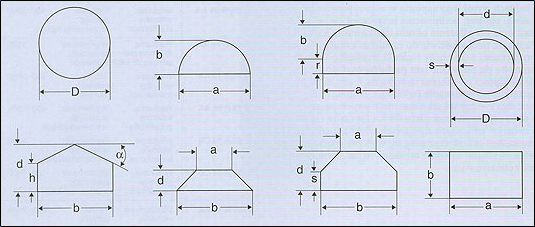
8. Sealing materials
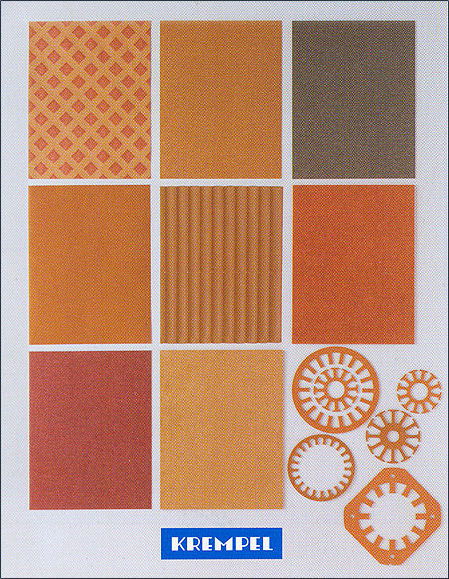
9. Components for solar panels

ELECTRICALLY
Preszpan
MATERIALS
ELECTRO-INSULATED
PAPERS
INSULATION



